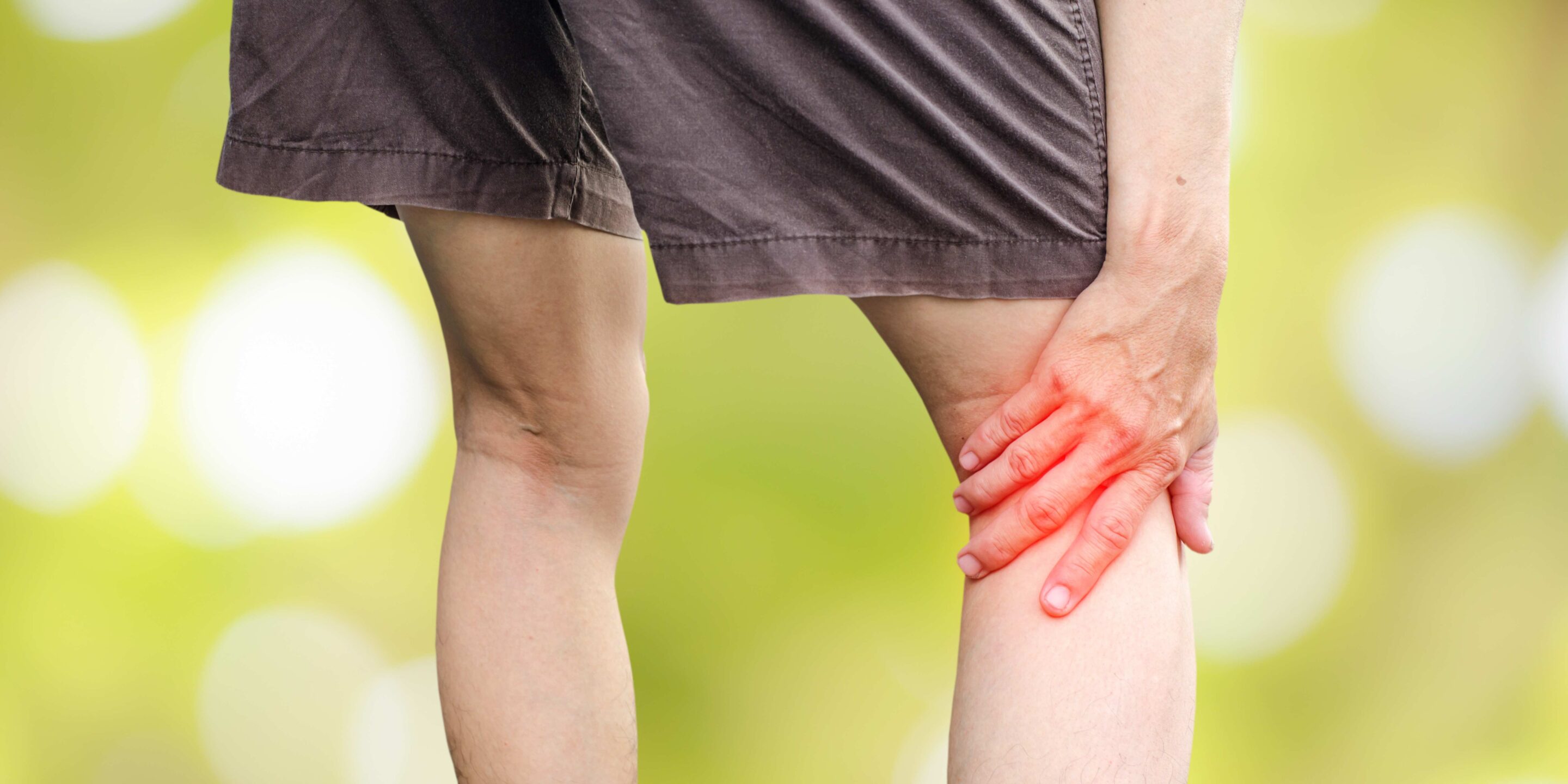What is Causing My Back of Knee Pain?
Back-of-knee pain, though often dismissed, can be a perplexing issue with various potential causes. This comprehensive exploration aims to provide a thorough understanding of the anatomy of the back of the knee, elucidate common symptoms associated with pain in this region, delve into the myriad causes, and underscore the critical need for seeking timely medical attention. Whether you’re an athlete, an office worker, or simply someone trying to navigate daily life, understanding and addressing back-of-knee pain is essential for maintaining optimal health and functionality.
What makes up the back of the knee?
The back of the knee is a complex amalgamation of tendons, ligaments, muscles, and the knee joint itself. The hamstrings, a group of three muscles at the back of the thigh, play a crucial role, connecting to the knee and affecting its movement. Ligaments, such as the posterior cruciate ligament (PCL), also contribute to the stability of the knee joint. Understanding this intricate anatomy provides a foundation for comprehending the potential sources of pain in this area.
Symptoms of back-of-knee pain
Pain and Tenderness: One of the primary indicators of back-of-knee pain is persistent discomfort or soreness. This pain can range from a dull ache to sharp, shooting sensations, often exacerbated by movement or prolonged periods of activity.
Swelling and Stiffness: Another common symptom is noticeable swelling at the back of the knee, accompanied by a feeling of tightness and restricted range of motion. Stiffness can make simple tasks, like bending or straightening the knee, challenging.
Difficulty in Bending or Straightening the Knee: Individuals experiencing back-of-knee pain may notice a significant limitation in their ability to bend or straighten the knee fully. This restriction can interfere with activities that involve flexion or extension of the knee joint.
Instability: A feeling of unsteadiness or as if the knee might give way during movement is a concerning symptom associated with back-of-knee pain. This instability can impact mobility and overall confidence in weight-bearing activities.
Why should you address back-of-knee pain?
Ignoring back-of-knee pain can have cascading effects on your overall well-being. Untreated pain may lead to compensatory movements and alterations in gait, potentially causing issues in other parts of the body. Moreover, persistent pain can affect your ability to perform daily activities, impacting your quality of life.
Addressing back-of-knee pain promptly is crucial not only for pain relief but also to prevent further damage and complications. Timely intervention can improve the chances of a successful recovery, allowing you to regain full functionality and mobility.
Causes of back-of-knee pain
Injuries: Traumatic events, such as falls, sports-related incidents, or accidents, can lead to direct impact on the knee, causing pain and damage to the structures at the back of the knee.
Ligament Sprains or Tears: Injuries to the ligaments, especially the posterior cruciate ligament (PCL), can contribute to both pain and instability. These injuries often occur during sports activities or as a result of sudden stops or changes in direction.
Meniscus Tears: The meniscus, a wedge-shaped cartilage that cushions the knee joint, can tear due to trauma or degeneration. This tear can lead to persistent pain, swelling, and difficulty in knee movement.
Hamstring Injuries: Strains or tears in the hamstring muscles, which run along the back of the thigh and connect to the knee, can radiate pain to the back of the knee. These injuries are common in athletes and can result from activities involving sudden acceleration or deceleration.
Medical Conditions
Arthritis: Inflammation of the knee joint, commonly seen in osteoarthritis and rheumatoid arthritis, can result in chronic pain and stiffness.
Baker’s Cyst: A Baker’s cyst is a fluid-filled swelling that can develop at the back of the knee, often associated with underlying joint issues such as arthritis.
Deep Vein Thrombosis (DVT): Blood clot formation in the deep veins of the leg can cause pain, swelling, and potential complications. While not exclusive to the back of the knee, DVT can contribute to discomfort in this area.
When to Seek Medical Attention
Certain signs indicate the need for prompt medical evaluation
Severe or Worsening Pain: If the pain is severe, persistent, or worsening despite rest and over-the-counter pain medication, it’s crucial to seek medical attention.
Inability to Bear Weight: If you are unable to bear weight on the affected leg, it suggests a potential serious injury that requires immediate evaluation.
Redness and Warmth: The presence of redness and warmth around the knee may indicate inflammation or infection, necessitating medical intervention.
Signs of Infection: Symptoms such as fever, swelling, or pus drainage from the affected area are signs of a potential infection that should be addressed promptly.
Contact Us for Treatment
If you find yourself grappling with persistent back-of-knee pain, reaching out to a specialized healthcare provider is paramount. Our experienced medical team is dedicated to providing comprehensive, personalized care, tailoring treatment plans to address your specific needs.
The first step in the treatment process is a thorough evaluation, including a detailed medical history, physical examination, and potentially imaging studies such as X-rays or MRIs. This helps identify the underlying cause of the pain and guides the development of an effective treatment plan.
Treatment options may include
Rest and Activity Modification: Giving the affected knee time to heal by avoiding activities that exacerbate the pain.
Physical Therapy: Targeted exercises and stretches to strengthen muscles, improve flexibility, and promote overall knee health.
Medications: Nonsteroidal anti-inflammatory drugs (NSAIDs) or pain relievers may be prescribed to alleviate pain and reduce inflammation.
Bracing or Supportive Devices: Depending on the underlying cause, braces or supportive devices may be recommended to provide stability and reduce strain on the knee.
Injections: In some cases, corticosteroid injections may be administered to reduce inflammation and alleviate pain.
Surgical Intervention: If conservative measures prove insufficient, surgical procedures may be considered. This could involve repairing ligaments, addressing meniscus tears, or addressing underlying medical conditions.
Recovery and Rehabilitation
The duration of recovery and rehabilitation varies depending on the severity and underlying cause of the back-of-knee pain. Following the prescribed treatment plan, engaging in physical therapy exercises, and adhering to any lifestyle modifications are crucial for a successful recovery.
It’s essential to communicate openly with your healthcare provider throughout the recovery process. This includes reporting any changes in symptoms, discussing challenges faced during rehabilitation, and addressing concerns or questions about the recovery timeline.
Preventive Measures and Lifestyle Considerations
While some causes of back-of-knee pain are unavoidable, certain preventive measures and lifestyle considerations can contribute to maintaining optimal knee health:
Warm-Up and Stretching: Prior to engaging in physical activities or exercise, ensure adequate warm-up and stretching to prepare the muscles and joints.
Strength Training: Incorporate strength training exercises that focus on the muscles around the knee, including the quadriceps and hamstrings, to provide additional support and stability.
Proper Footwear: Wear appropriate footwear, especially during physical activities, to provide adequate
support to the feet and knees.
Maintain a Healthy Weight: Excess body weight can exert additional stress on the knee joints. Maintaining a healthy weight can reduce the risk of developing knee-related issues.
Stay Hydrated: Proper hydration is essential for joint health. Water helps lubricate joints and supports overall joint function.
Listen to Your Body: Pay attention to any warning signs such as pain or discomfort during activities. If you experience pain, it’s crucial to modify or stop the activity to prevent potential injuries.
Conclusion
In conclusion, back-of-knee pain is a multifaceted issue that requires a comprehensive understanding of its anatomy, symptoms, causes, and treatment options. Whether the pain stems from injuries, ligament issues, meniscus tears, or underlying medical conditions, early intervention and personalized care are essential for a successful recovery.
If you are experiencing persistent back-of-knee pain, do not hesitate to seek professional medical attention. Our dedicated healthcare team is committed to providing individualized care, guiding you through the diagnosis, treatment, and recovery process.
Regaining control over your knee health involves active participation in your treatment plan, adherence to recommended exercises and lifestyle modifications, and open communication with your healthcare provider. With the right support and a proactive approach, you can overcome back-of-knee pain and reclaim a life of comfort and mobility.
Remember, your knee health is a crucial component of your overall well-being. Take the necessary steps today to ensure a pain-free and active tomorrow.
Looking to schedule an appointment with a physician?
Carmichael Office
6620 Coyle Avenue,
Suite 202
Carmichael, CA 95608
Roseville Office
576 N Sunrise Avenue,
Suite 230
Roseville, CA 95661
Folsom Office
1580 Creekside Drive,
Suite 100 & 110
Folsom, CA 95630
Social
© Premier Podiatry & Orthopedics. All Rights Reserved. | Privacy Policy

